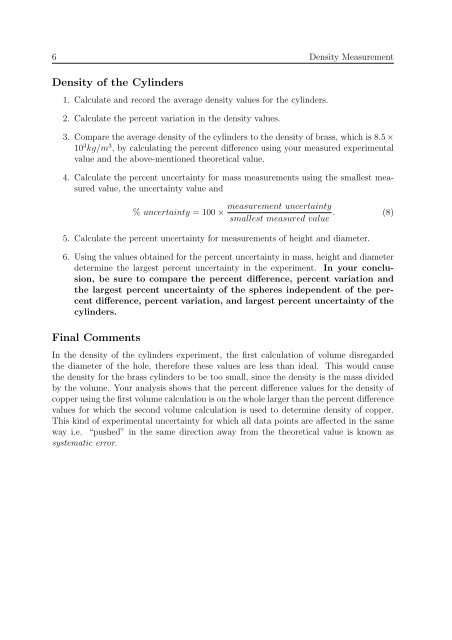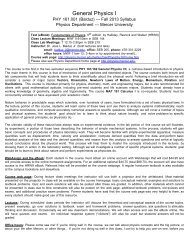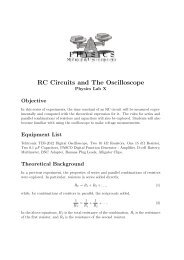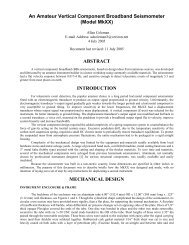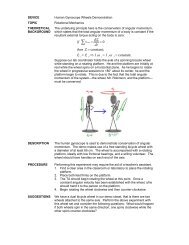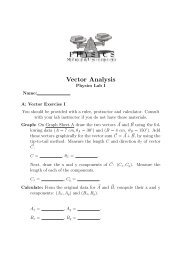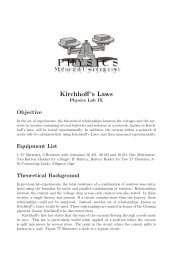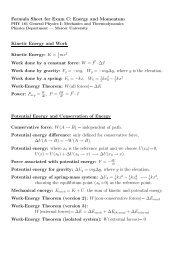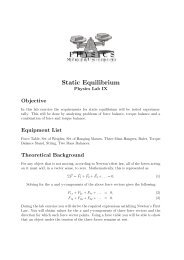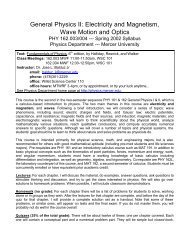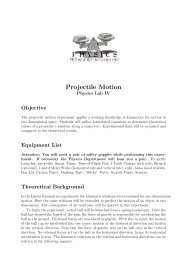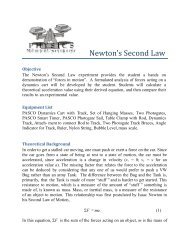Analysis of Experimental Uncertainties: Density Measurement
Analysis of Experimental Uncertainties: Density Measurement
Analysis of Experimental Uncertainties: Density Measurement
You also want an ePaper? Increase the reach of your titles
YUMPU automatically turns print PDFs into web optimized ePapers that Google loves.
6 <strong>Density</strong> <strong>Measurement</strong><strong>Density</strong> <strong>of</strong> the Cylinders1. Calculate and record the average density values for the cylinders.2. Calculate the percent variation in the density values.3. Compare the average density <strong>of</strong> the cylinders to the density <strong>of</strong> brass, which is 8.5 ×10 3 kg/m 3 , by calculating the percent difference using your measured experimentalvalue and the above-mentioned theoretical value.4. Calculate the percent uncertainty for mass measurements using the smallest measuredvalue, the uncertainty value and% uncertainty = 100 ×measurement uncertaintysmallest measured value . (8)5. Calculate the percent uncertainty for measurements <strong>of</strong> height and diameter.6. Using the values obtained for the percent uncertainty in mass, height and diameterdetermine the largest percent uncertainty in the experiment. In your conclusion,be sure to compare the percent difference, percent variation andthe largest percent uncertainty <strong>of</strong> the spheres independent <strong>of</strong> the percentdifference, percent variation, and largest percent uncertainty <strong>of</strong> thecylinders.Final CommentsIn the density <strong>of</strong> the cylinders experiment, the first calculation <strong>of</strong> volume disregardedthe diameter <strong>of</strong> the hole, therefore these values are less than ideal. This would causethe density for the brass cylinders to be too small, since the density is the mass dividedby the volume. Your analysis shows that the percent difference values for the density <strong>of</strong>copper using the first volume calculation is on the whole larger than the percent differencevalues for which the second volume calculation is used to determine density <strong>of</strong> copper.This kind <strong>of</strong> experimental uncertainty for which all data points are affected in the sameway i.e. “pushed” in the same direction away from the theoretical value is known assystematic error.


